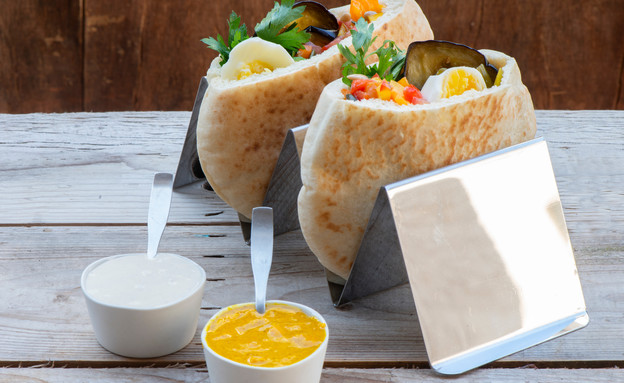But there is also an advantage: Eating pita allows you to limit the desired amount of food and adjust the portion size in advance.
Plain flour pita
Unlike spelled pita bread, the size of the regular pita bread is relatively large. Even in terms of calories, the regular pita is not dietary and contains around 250 calories (equivalent to 3 slices of bread). This pita is more suitable for lunch, as it allows you to combine a larger amount of food.
Whole wheat pita
Contrary to what many believe, this pita contains exactly the same number of calories as the regular pita, but its nutritional benefits are many. Similar to the buckwheat pita, the full pita is prepared by grinding the whole grain (wheat or buckwheat). This process ensures that all the components of the grain are in the flour. When grinding the whole grain, the husks are also ground, these are rich in dietary fiber.
Fiber has many roles that contribute to health: regulating bowel movements, preventing the absorption of sugars and fats by “carrying” them along with them to the colon, increasing the number of positive bacteria (the microbiome) and their diversity in the colon. In addition, studies have found a connection between the amount and variety of bacteria and health and disease prevention. Another reason for eating whole grains stems from the content of vitamins and minerals found in the husks and sprouts that are found in the process of producing white flour. The husks contain all the vitamins (mainly vitamins B) and a vitamin is found in the sprout Eessential fatty acids and various minerals.
Spelled pita bread
An advantage of this pita compared to pita made of wheat (whole and regular), is due to the fact that the coriander does not contain a type of carbohydrate called fructan. The fructans are found in wheat, rye and barley and suffer from irritable bowel syndrome, its presence sometimes causes swelling and pain in the stomach. Therefore, those who suffer from these symptoms can benefit from replacing wheat or rye with buckwheat. This pita also contains the same number of calories per hundred grams, which is the same as the calories in a pita made from regular wholemeal flour, its advantage comes from its small size, which allows you to enjoy a satisfying snack.
What should you put inside the pita?
Of course, the content of the pita is just as important, and it is desirable that it contain: lean protein (such as low-fat cheese, for example), many vegetables and healthy vegetable fat (such as tahini or avocado).
In conclusion: Pita that is used as a regular meal is less recommended, but it can definitely be a solution for days when there is no time and ability to sit down for a meal at a table. In such a case, a whole grain pita should be preferred and depending on the type of meal (breakfast or lunch) and decide on the size. I recommend varying between spelled pita and whole wheat pita.
Dr. Siegel Frishman, national dietitian of the hospitals of the General Hospital